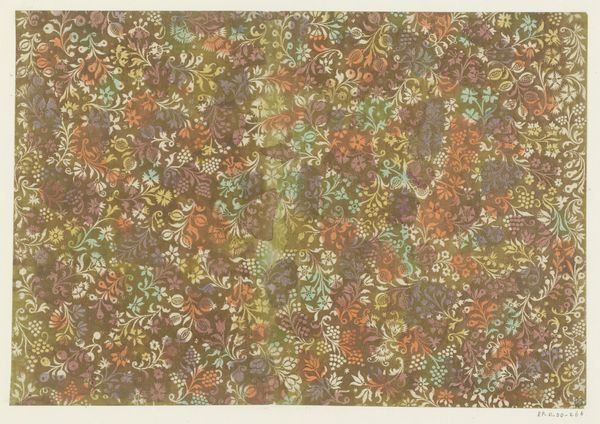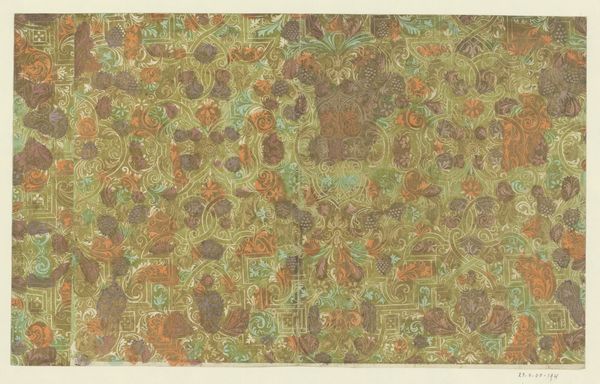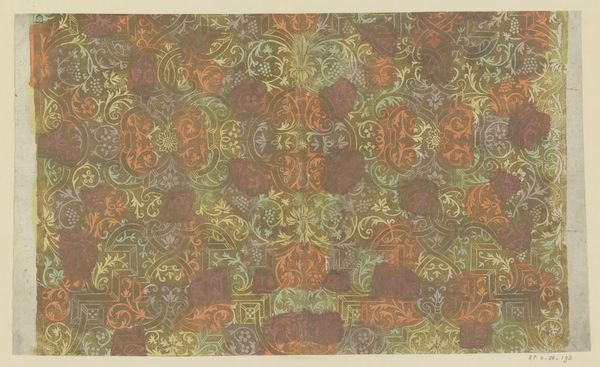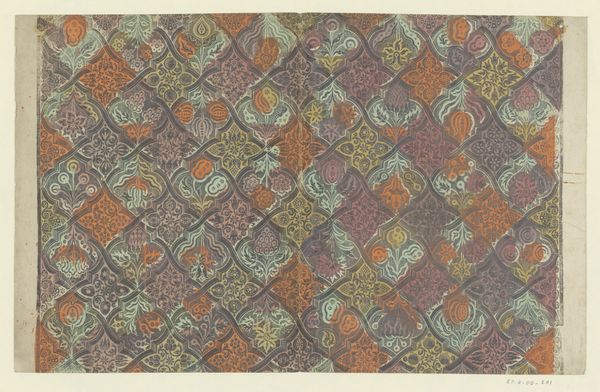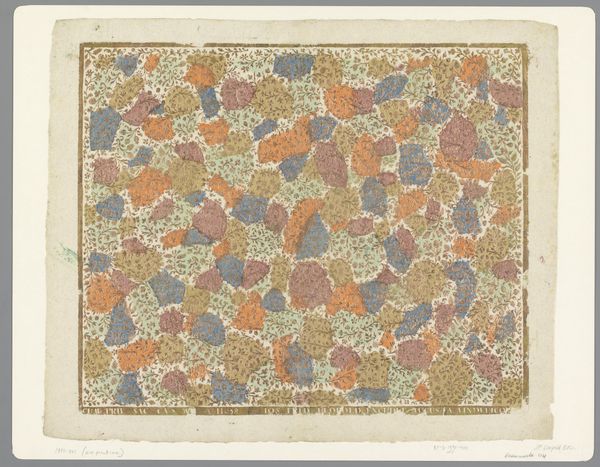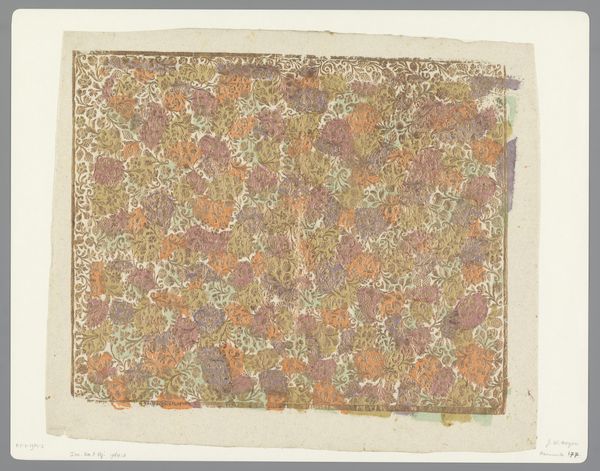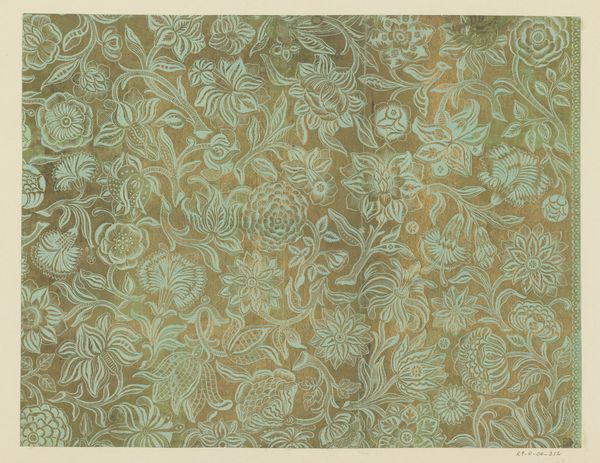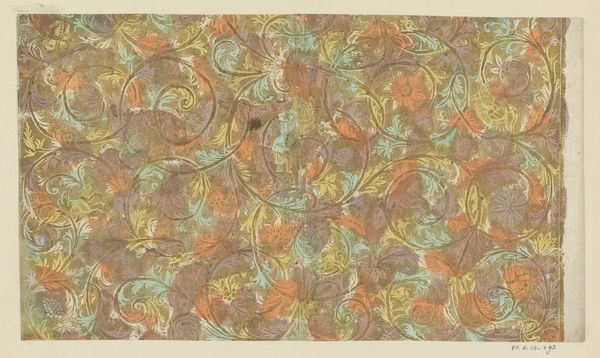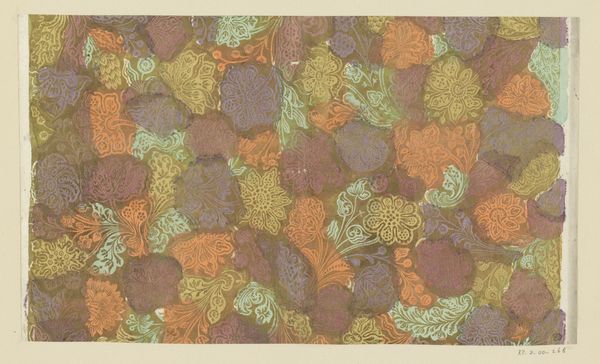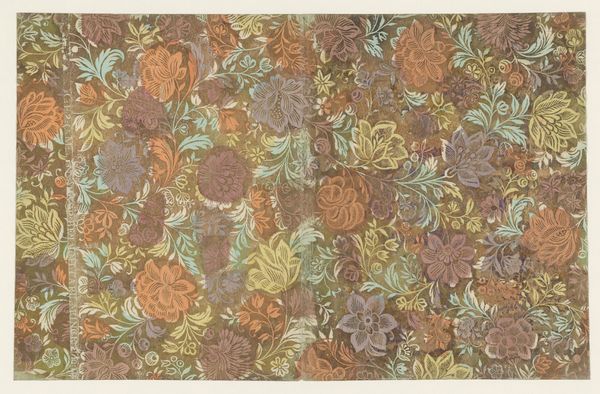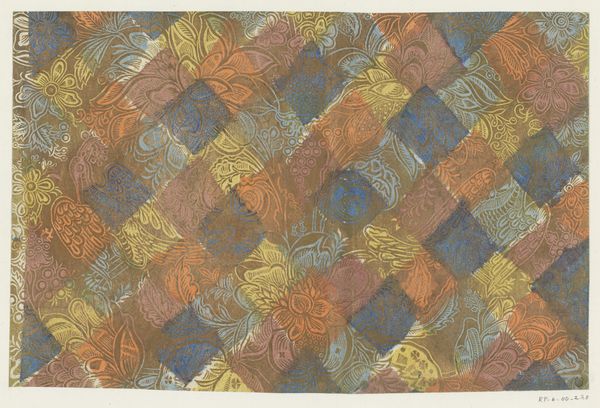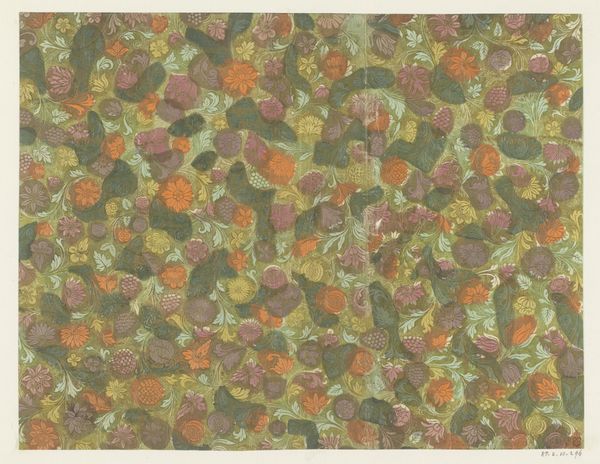
drawing, paper
#
drawing
#
organic
#
baroque
#
paper
#
geometric pattern
#
organic pattern
#
decorative-art
Dimensions: height 260 mm, width 380 mm
Copyright: Rijks Museum: Open Domain
Curator: Here we have "Blad met ranken met bloemen en vruchten," or "Sheet with vines with flowers and fruit," a drawing on paper made between 1740 and 1780 by Johann Wilhelm Meyer. Editor: At first glance, it strikes me as rather chaotic, though intentionally so. There's a riot of botanical forms, all competing for attention in a deliberately flattened space. Curator: Indeed. Look at the way Meyer uses drawing to evoke textile design. The repeating floral and vine motifs, rendered in muted browns, oranges, and blues, immediately suggest a patterned fabric. We must consider where Meyer sourced the paper, what the societal view of flora was, and why geometric patterns had an uptick in popularity. Editor: Absolutely, the repetitive pattern is undeniable and clearly draws on the visual language of decorative arts from this period. Though the rendering might seem meticulous at first, observing each distinct shape reveals an exciting asymmetry and textural variation—an interest in visual tensions is notable. Curator: Furthermore, examining the source of pigments would unveil details about their accessibility, use and economic relevance to manufacture goods at the time, and by extension how common materials shaped artistic expression. Editor: I agree that the choice of medium underscores this tension between high art and design, between individual expression and the repetitive nature of industry. This brings to the forefront questions about intended functionality: was it perhaps a preparatory sketch for something far more ordinary in its practical application? Curator: Perhaps, or as a means for an artisan to further set himself apart to patrons vying for bespoke adornments and decoration to establish social distinction. Regardless, its intrinsic value as evidence of labor—the artist’s labor, the material producer’s labor—is what I believe truly compels. Editor: I am compelled as well, but by the subtle sophistication by its overall impact! I now notice a hidden visual harmony—an organic kind—within what initially seemed cluttered. It prompts an intimate viewing, encouraging a very personal consideration for form and intention, regardless of its functionality. Curator: Precisely, its formal arrangement acts as a historical index, directing us toward an appreciation of the social, economic, and manufacturing contexts of 18th-century ornamentation. Editor: It’s a convergence of thought-provoking artistry!
Comments
No comments
Be the first to comment and join the conversation on the ultimate creative platform.
